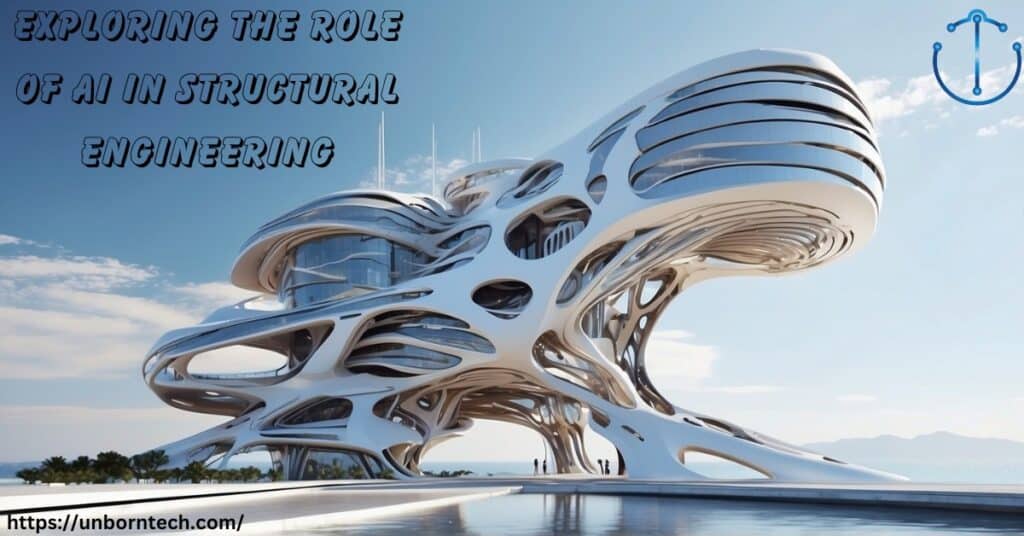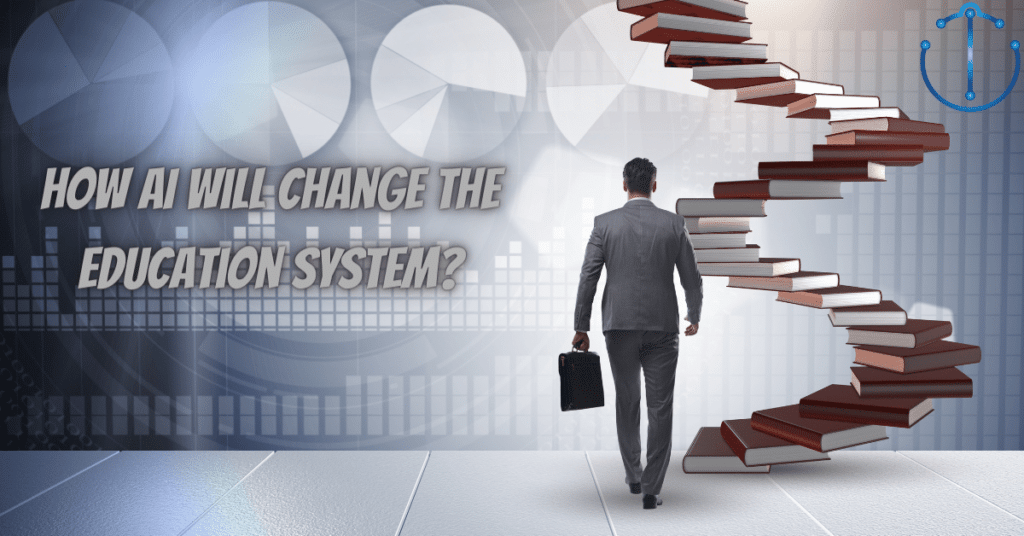In the kingdom of modern engineering, Artificial Intelligence stands as a revolutionary force, transforming various industries. One such field experiencing a significant transformation is structural engineering.
This critical discipline, focused on designing and analyzing structures for safety and durability, has embraced AI’s capabilities wholeheartedly.
Today, we embark on a comprehensive analysis of AI’s multifaceted role in structural engineering, exploring its applications, benefits, challenges, and future prospects.
Table of Contents
Understanding AI in Structural Engineering
AI in structural engineering refers to the utilization of advanced technologies such as machine learning algorithms, neural networks, and computational intelligence to enhance traditional engineering practices.
These tools empower engineers to analyze complex data, optimize designs, predict structural behavior, and automate tasks, thereby revolutionizing the field of structural engineering.
The Current Landscape
In the past, engineers used complicated math and simulations to analyze and design structures. These methods needed a lot of computer power and expert knowledge.
But now, AI technology is changing things. AI can handle huge amounts of data, spot patterns, and learn from trial and error. This means AI can analyze structural data quicker and better than before.
It helps design buildings faster, predict when structures might fail, and overall, it’s making structural engineering better in every way.
5 Applications of AI in Structural Engineering
AI in structural engineering includes a wide range of applications, each contributing to enhancing efficiency, safety, and sustainability in the field.
Let’s delve into 5 major areas where AI is making a significant impact.
1. Design Optimization and Exploration
AI algorithms are really important for making structural designs better. They look at lots of things like what materials to use, how much it will cost, if it’s energy-efficient, and how well the structure will perform.
These algorithms check out a bunch of different options to find the best ones that meet certain goals, like being strong enough or following safety rules.
With AI helping out, engineers can look at different ideas fast and make smarter choices for their designs.

2. Predictive Maintenance and Structural Health Monitoring
AI using predictive analytics can keep an eye on how structures are doing in real-time. It can spot problems early before they become big issues.
By combining sensors and AI, engineers can gather and study data about how a structure is behaving. If something seems off, AI can predict when maintenance might be needed.
This proactive approach helps to keep things running smoothly, improves safety, and makes structures last longer. With AI, engineers can keep checking on structures regularly, making sure they stay strong and durable.
3. Risk Assessment and Control
AI algorithms analyze historical data and simulate various scenarios to assess risks associated with structural projects.
By identifying potential hazards and uncertainties, engineers can make informed decisions to reduce risks and ensure structural safety.
One part of AI called Artificial Neural Networks (ANN) can predict how structures might fail and figure out ways to prevent it.
With AI helping out, engineers can better understand risks and take steps to make sure structures stay strong and avoid big disasters.
4. Construction Automation and Management
AI-enabled robotics and automation streamline construction processes, increasing efficiency, precision, and productivity.
From autonomous construction vehicles to robotic bricklayers, AI technologies optimize construction operations, leading to faster project completion and reduced labor costs.
Moreover, AI decision support systems help with managing projects by looking at complicated data and giving useful advice.
Machine Learning (ML) algorithms train machines or robots to do tasks accurately, which keeps projects running smoothly and maintains high quality.
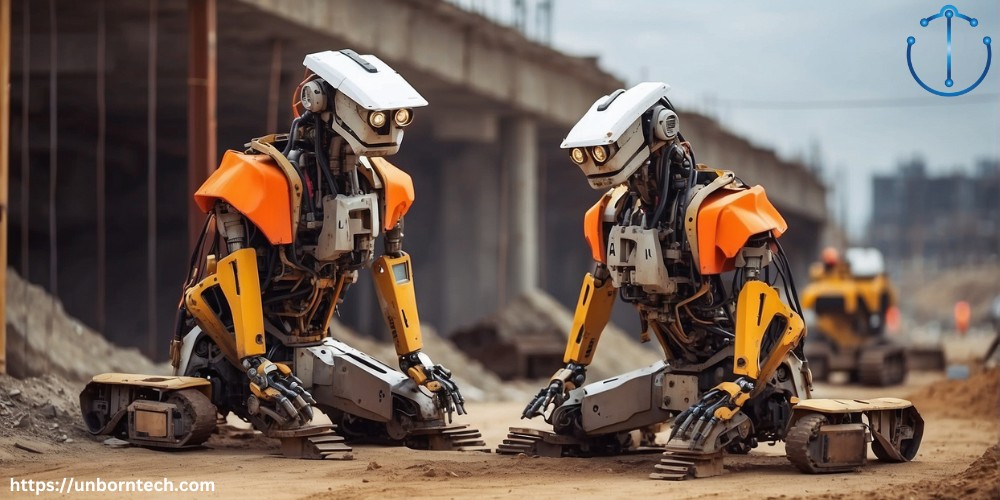
5. Enhanced Structural Analysis
AI algorithms enhance structural analysis by automating data processing and analysis, reducing manual calculations, and improving accuracy.
Machine learning models trained on historical data recognize patterns and make accurate predictions about structural behavior, leading to more precise analysis and improved safety standards.
Additionally, AI-driven intelligent decision support systems optimize workflows, reduce human error, and enhance the quality and reliability of structural designs.
By leveraging AI technologies in these areas, structural engineers can optimize designs, enhance safety, and ensure the longevity of structures, thereby shaping the future of the industry.
AI Methods in Structural Engineering
AI methods have become obligatory tools in enhancing various aspects of structural engineering, from analysis to design and management.
Let’s explore some of these methods:
1. Machine Learning (ML)
Machine Learning algorithms are like smart assistants for engineers. They can learn from historical data and make predictions about how structures will behave under different conditions.
ML algorithms include techniques such as supervised learning (where the computer learns from labeled data), unsupervised learning (where it learns from unlabeled data to find patterns), and reinforcement learning (where it learns through trial and error).
ML helps engineers predict structural performance, identify conditions like damage or fatigue, and even automate inspection processes.
2. Deep Learning (DL)
Deep Learning is like giving the computer a powerful microscope to examine structures in detail. It uses neural networks to process vast amounts of data and identify patterns.
For example, Convolutional Neural Networks (CNNs) can analyze images of structures to detect cracks or damage, while Recurrent Neural Networks (RNNs) are good at analyzing sequential data, like time-series data from structural sensors.
DL helps in predicting seismic responses, localizing damage after earthquakes, and designing structural control systems.
3. Expert Systems
Expert Systems are like having a wise mentor by your side. They encode expert knowledge into rules and algorithms to provide recommendations or make decisions.
These systems help engineers optimize designs, select materials, or plan construction processes based on established rules and principles.
4. Optimization Algorithms
Optimization Algorithms are like search engines for finding the best solutions. They explore a vast space of possible designs and iteratively improve them based on predefined criteria.
Genetic algorithms, for example, mimic natural selection to evolve optimal designs, considering factors like safety, cost, and sustainability.
5. Pattern Recognition (PR)
Pattern Recognition is like having a keen eye for spotting trends and anomalies. It involves using statistical analysis and machine learning to identify patterns in structural behavior or data.
This helps engineers analyze structural performance, identify failure modes, and characterize structural properties with precision.
6. Probabilistic Methods
Probabilistic Methods are like playing it safe by considering all possible scenarios. They use techniques like Bayesian networks to analyze structural reliability and assess risks by accounting for uncertainties in materials, loads, and environmental conditions.
This ensures that designs are robust and resilient under various conditions.
7. Data-driven Structural Health Monitoring (SHM)
Data-driven SHM is like having a health tracker for structures. It uses sensors and AI algorithms to continuously monitor structural health in real-time, detecting anomalies, identifying damage, and predicting remaining useful life.
This proactive approach helps in timely maintenance and ensures the longevity of structures.
8. Natural Language Processing (NLP)
Natural Language Processing is like having a conversation with the computer. It enables engineers to extract insights from textual data, such as design specifications or research papers, to aid in decision-making processes.
NLP helps in understanding and interpreting vast amounts of text-based information efficiently.
9. Finite Element Analysis (FEA) with AI
Finite Element Analysis with AI combines traditional FEA methods with AI techniques to improve accuracy and efficiency in analyzing complex structural systems.
By integrating AI, engineers can handle intricate design challenges more effectively and obtain precise insights into structural behavior.
10. Robotics and Automation
Robotics and Automation are like having a team of specialized workers for construction tasks. AI-driven robots and automated systems streamline construction processes, from assembly to inspection and maintenance, making them safer, faster, and more efficient.
By leveraging these AI methods, structural engineers can tackle challenges with greater precision, efficiency, and innovation, paving the way for safer, more sustainable, and resilient structures in the future.
Benefits of AI in Structural Engineering
Using AI in structural engineering brings a lot of benefits, changing the old ways and making things more efficient and innovative.
- Enhanced Efficiency: AI automates repetitive tasks, allowing engineers to focus on higher-level design and analysis activities. This acceleration of project timelines minimizes time-to-market for structures, contributing to overall project efficiency.
- Improved Accuracy: AI algorithms analyze vast amounts of data with precision, facilitating informed decision-making based on reliable insights. This leads to minimized errors in structural designs and enhances overall design quality.
- Cost Reduction: AI helps make designs better and construction smoother, which means less waste of materials and lower labor costs. It can predict when maintenance is needed, so there’s less chance of big, expensive problems happening later on. This saves a lot of money in the long run.
- Innovation and Creativity: AI gives engineers the ability to try out new and creative design ideas, pushing the limits of what’s possible in structural engineering. Generative design methods help make these new structures, focusing on making them work well and look good at the same time.
- Predictive Maintenance: Through structural health monitoring, AI enables predictive maintenance, identifying potential issues before they become critical. This proactive approach saves costs and extends the lifespan of structures.
- Sustainability: AI optimizes the use of materials and resources, promoting more sustainable construction practices by reducing waste and energy consumption. This contributes to environmentally friendly building practices and supports sustainability goals.
- Maximized Materials Efficacy and Efficiency: AI ensures the efficient use of materials, maximizing efficacy and minimizing waste. This leads to cost savings and promotes sustainable construction practices.
- Error Reduction: Making procedures simpler and automating tasks helps prevent mistakes in engineering projects. This makes sure that the designs and construction work are accurate and reliable.
- Improved Collaboration and Communication: AI-based tools help team members work together smoothly, even if they’re not in the same place. These tools make it easy to share information and communicate, improving teamwork. Virtual design environments make it easier to organize projects and get things done faster.
- Knowledge Enhancement: AI enables engineers to stay updated with the latest standards and technologies, reducing time spent on searching for specialized information.
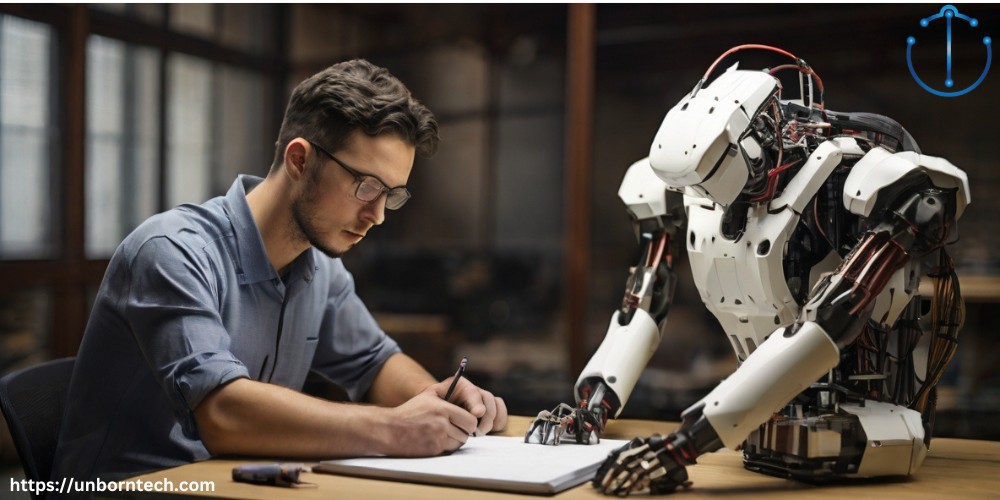
Integration of AI in structural engineering not only improves efficiency and accuracy but also drives innovation, sustainability, and cost-effectiveness in the field, ushering in a new era of advancement and excellence.
Don’t Worry Structural Engineers – AI Is Not Going To Replace You
Structural engineers, fear not – AI is not poised to replace your invaluable expertise and skills. While AI brings significant advancements to the field, there are essential aspects that it may struggle to fully replicate:
- Creative Problem-Solving: Structural engineers possess the ability to develop innovative solutions to complex engineering problems, leveraging their creativity and experience to tackle uncertain challenges.
- Contextual Understanding: Engineers integrate architectural, environmental, social, and regulatory considerations into their designs, aligning structures with broader project objectives and constraints.
- Judgment and Decision-Making: Human knowledge and experience are really important for making tough decisions, especially when it comes to balancing safety, cost, timing, and sustainability, especially when things aren’t clear.
- Ethical and Social Responsibility: Structural engineers prioritize public safety, environmental sustainability, and societal welfare in their designs and decisions, considering the long-term impacts of their work.
- Adaptability and Improvisation: In the face of unclear standards or unexpected challenges, engineers demonstrate the ability to improvise technical solutions, drawing on their expertise and adaptability.
In summary, while AI offers significant benefits in enhancing efficiency and effectiveness, the unique qualities and capabilities of structural engineers remain indispensable in the field, ensuring the delivery of safe, innovative, and socially responsible structures.
Challenges and Considerations
Incorporating AI into structural engineering presents numerous advantages, but it also brings forth a set of challenges and considerations that engineers must address:
- Data Quality and Quantity: AI algorithms require large, high-quality datasets for effective training and validation. However, obtaining such datasets, especially for specialized projects, can be challenging. Engineers must ensure the accuracy and reliability of data inputs to enhance the effectiveness of AI applications.
- Interpretability and Transparency: Sometimes, complex AI models work in a way that’s hard to understand, like a “black box.” This can be tricky for engineers who need to know how decisions are made, especially in important situations. It’s important for engineers to make sure AI systems are transparent and accountable so that people can trust them in the industry.
- Regulatory Compliance and Standards: Using AI in structural engineering means following industry rules and standards. Engineers need to make sure that AI solutions meet safety codes and follow the law so that they can be used properly. This is important for getting AI systems accepted and used in the field.
- Ethical and Social Implications: The adoption of AI raises ethical concerns regarding job displacement, privacy, and equity within the workforce. Engineers must address these ethical considerations and ensure responsible AI deployment to reduce societal impacts effectively.
- Skill Gap: Engineers need to learn about data science and AI to use them well in structural engineering. But it’s not always easy to learn these new skills or adapt to new tools. Training and education in the industry need to catch up to help bridge this gap and make it easier for engineers to use AI effectively.
By acknowledging and addressing these challenges and considerations, engineers can harness the potential of AI to enhance efficiency, innovation, and sustainability in structural engineering practices.
How You Can Use AI In Your Structural Engineering Projects
Incorporating AI into structural engineering projects can significantly enhance efficiency and innovation. Here’s a comprehensive guide on how engineers can leverage AI in their projects:
- Identify Suitable AI Applications: Begin by identifying specific areas in your workflow where AI could be beneficial, such as design optimization, predictive modeling, or structural health monitoring. Consider the challenges you face and how AI technology could address them effectively.
- Understand AI Fundamentals: Familiarize yourself with the fundamentals of AI, including machine learning algorithms and other relevant technologies. Having a basic understanding will help you evaluate potential solutions and collaborate effectively with AI specialists.
- Access Data Sources: Data is crucial for AI applications. Identify relevant data sources, such as historical design data or sensor data from structural monitoring systems. Ensure access to clean, labeled datasets for training AI models.
- Collaborate with AI Experts: Consider collaborating with AI specialists or data scientists who have expertise in developing AI solutions.
- Select AI Tools and Platforms: Explore available AI tools and platforms suitable for structural engineering applications. Evaluate features, scalability, reliability, and ease of use before making a selection.
- Develop Proof of Concepts: Try out small projects to see if AI solutions will work. Work with AI experts to make and test prototype solutions for certain problems or tasks.
- Integrate AI into Workflows: Once you know that AI solutions work well, start using them in your normal work step by step. Find chances to automate tasks, make decisions better, or do things more accurately and quickly with AI.
- Train and Educate Staff: Provide training and education to team members on using AI tools and integrating AI into their work effectively. Offer workshops, seminars, or online courses on AI fundamentals and best practices relevant to structural engineering.
- Iterate and Improve: Continuously monitor and evaluate AI solutions’ performance in projects. Gather feedback, analyze outcomes, and identify areas for improvement.
- Stay Updated: Keep well-informed of the latest developments in AI technology and its applications in structural engineering. Attend conferences, seminars, and webinars, and engage with professional networks to stay informed about emerging trends and innovative solutions in the field.

By following these steps, engineers can effectively harness the power of AI to achieve more efficient and innovative outcomes in their structural engineering projects.
Future Outlook of AI in Structural Engineering
The future outlook of AI in structural engineering is promising, with significant opportunities for innovation and advancement.
As AI technologies continue to evolve, several trends are expected to shape the field:
- Integration with Emerging Technologies: AI will be integrated with other emerging technologies such as the Internet of Things (IoT) and big data analytics. This integration will provide engineers with real-time insights into structural performance, enabling data-driven decision-making.
- Augmented Reality and Virtual Reality Applications: The use of augmented reality (AR) and virtual reality (VR) will offer exciting possibilities for visualizing and simulating structural designs in a virtual environment. This technology enhances collaboration and improves design validation before construction begins.
- Advancements in Robotic Construction: Robotics equipped with AI algorithms will play a significant role in streamlining complex construction tasks. AI-enabled robots can assist in assembling complicated structural components and performing quality inspections, enhancing efficiency and precision in the construction process.
- Continued Evolution of AI Algorithms: AI algorithms will continue to evolve, becoming more sophisticated and data-driven. This evolution will expand the applications of AI in structural design, analysis, and construction, enabling engineers to tackle increasingly complex challenges with greater efficiency and innovation.
- Interdisciplinary Collaborations: Collaborations between engineers, data scientists, and AI researchers will drive innovation in structural engineering. This teamwork across different fields will help solve tough problems and make big advances in the field.
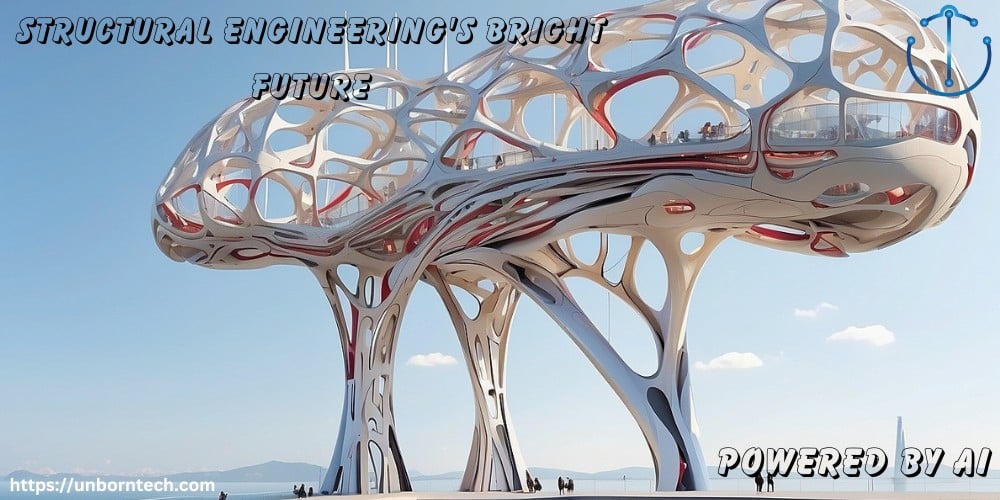
With new technology and teams working together across different areas, there’s a lot of potential for innovation and making things work better in the field.
Conclusion
In conclusion, the integration of artificial intelligence into structural engineering marks a transformative shift, offering unparalleled opportunities to enhance efficiency, accuracy, and innovation throughout the lifecycle of structures.
Although there are challenges with things like data quality, understanding how AI works, and ethical concerns, AI helps engineers make better designs, foresee how structures will behave, automate tasks, and change how we build things.
Collaboration between engineers, AI researchers, and policymakers is crucial for realizing AI’s full potential in building safer, more resilient, and sustainable structures for the future.

